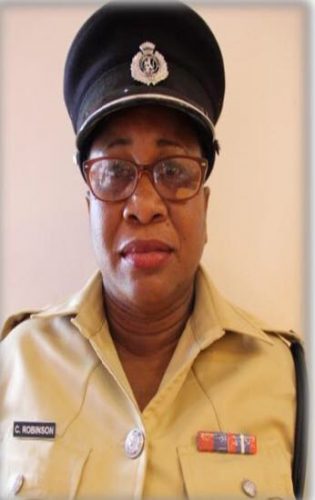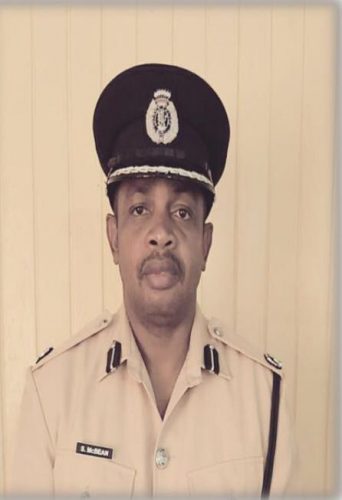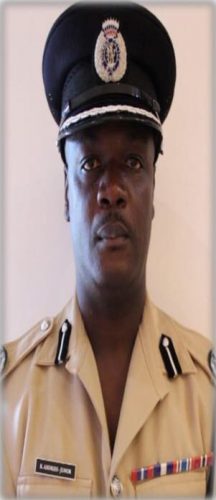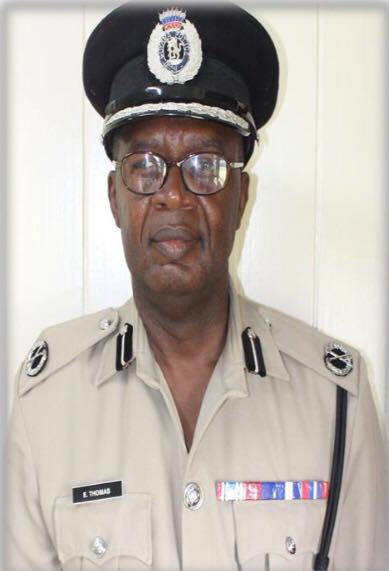Seeking to increase transparency, the Guyana Police Force (GPF) has introduced the use of portable video recording devices, known as body cameras, during daily operations in several divisions and Regional Commander of Region 4(A) Assistant Commissioner Edgar Thomas is seeking to lead by example to encourage the adoption of their use by members of the force.
“The issue here is that yes we have [the camera] already but the will to use it… that is the issue. As a Divisional Commander, my division will be leading in terms of the use of the cameras,” Thomas told Sunday Stabroek in an interview.
Thomas, who is also head of the GPF’s Information Technology (IT) Department, said that the implementation of the use of the body cameras is aimed at benefitting both the police and public, equally.

Crystal Robinson
He explained that it is expected to increase the level of transparency in law enforcement and police conduct and reduce certain types of cases, particularly corrupt practices, while producing live evidence of day-to-day interactions and monitoring the ranks’ behaviour when interacting with the public.
He also noted that there may be cases where people may seek to trump up allegations against the police, who may be proven innocent by their cameras.
“At the supervisory level, we want to see how the police is dealing with the public. When the police goes out on the street with a camera and interact with one from the public, that camera will be rolling all the time. [And]… if one actually makes a complaint against that police, we have the cameras there,” he added, while also noting that there is a system in place for the recorded footage to be transferred to a secondary drive that will be lodged for those at the supervisory level to review if the need arises.
Thomas explained that the ultimate goal is to have body cameras for every rank and police station across the country. “…So you wouldn’t see every police man out there with cameras but eventually we want to get there,” he said.

Simon Mc Bean
To date, body cameras have been distributed to Regional Divisions 4A, 4C, 3 and 2. However, while Regions 4A, 2 and 3 have started using them to some extent, Regions 4C is awaiting the holding of training seminar for ranks before they start using the equipment.
Thomas mentioned that apart from the body cameras, cameras can also be seen fitted at various police stations countrywide and will soon even be set up on police vehicles.
“…My intention is not to only use body cameras [but to] use ordinary video cameras to supplement body cameras also. And I don’t think anything is wrong with that. If the man in the street is walking with a camera, why the police cannot walk on the street with a camera? So you will be seeing police with a big camera also. So you will be seeing cameras,” he said, while noting that they will not be covert.
In April this year, the Guyana Police Force had announced that as part of a reformation process, 40 ranks from the then D Division (West Demerara) were trained to use the body cameras.

Royston Andries-Junor
The training, it had said, was to allow the ranks to be able to operate the equipment to capture digital audio and video evidence for criminal, civil and traffic offences, which will also assist ranks with recalling facts and other details captured by the equipment that would accurately relate a chain of events when writing reports.
The police force had noted that the ranks would be required to wear the body cameras during their shift at “all times” and required to activate it when it is “absolutely” necessary, such as in traffic stops, priority responses, vehicle pursuits, arrest situations, vehicles searches, physical confrontations, and crimes in progress, among others.
‘Workable’
According to Thomas, while ranks are being properly trained to use the cameras, their willingness to use it continues to be a challenge.
In this regard, he noted the importance of having proper Standard Operating Procedures (SOPs) to deal with “the eventuality from both sides.”
“So the fact of the matter is having the camera is one and having the correct SOPs in dealing with the cameras is another one and we have that—I won’t say correct—but we have a workable one that can be adjusted from time to time,” he said.
Thomas related that there might be instances where ranks might want to turn off the cameras. “In our SOPs, if a police turns off a camera and someone makes an allegation against him, he has to explain why the camera was turned off because the camera is there to protect him also. So he has to explain why the camera was turned off,” he said.
He also noted that the presence of the cameras could serve as a deterrent to potential criminals.
Sunday Stabroek also spoke to a number of other commanders, whose regions were recipients of body cameras for use during their daily operations. Regional Commander of Region 3 (Essequibo Islands-West Demerara) Assistant Commissioner Simon Mc Bean said that his division has two body cameras, which were not used as yet. He said they are expected to receive some more shortly.
He noted that since they received them, there has yet to be a situation which has warranted their use. However, he said, if the need arises they are prepared to use it.
He added that once they begin using the equipment, it will be used in any
situation, whether it’s serious crime or another case where the police have to deal with the public.
“It’s more or less evidence gathering. It helps us to have a clear picture of what went on from the initial police contact with members of the public throughout and it also helps us to look at the conduct of our policemen because it’s where everything will be recorded and that will stored and kept. So whether or not we want to use it from an evidential point of view or not, we have a system that everything will be stored, every interaction,” Mc Bean explained
Meanwhile, Region 2 (Pomeroon-Supenaam) has eight body cameras. They were used thrice to date and will be fully implemented during the holiday peak hours, according to the Regional Commander Woman Supertindent Crystal Robinson, who said that since Essequibo is more of a rural division in comparison to Georgetown, many interact with the police but are often unaware of the presence of the equipment.
“At least so far the results let you see the ranks, how they act when they are on duty, that is for sure [so] that you would able to know how to control them and then the public’s reaction if they are pleased to see that, especially the traffic ranks and the patrol ranks wearing the body cameras,” Robinson stated.
Regional Divisional 4C (Industry-West Mahaica Bridge), on the other hand, is waiting on a training seminar to be conducted to educate the ranks of the use of the body cameras being rolled out in the division.
Head of the division Assistant Commissioner Royston Andries-Junor made this disclosure while stating that he plans to have the session conducted at the soonest. “Well, the use of the body cameras will be like every other thing—to record what’s going on. Basically it’s to ensure professionalism on one side and to capture misconduct if it happens on the other side. At the end of the day, the aim is to understand what’s going on out there from both sides,” Andries-Junor said.
Thomas explained to Sunday Stabroek that the dispatch of the body cameras within the various policing divisions is usually prioritised. “We prioritise. We look in terms of the large volume of reports and we look at many other things… bearing in mind the objectives of having cameras,” he said, while stating that “some may never need.”






